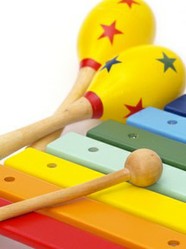Students generally enjoy editing practice instead of traditional grammar exercises. Usually, a grammar exercise has numbered sentences, each covering the same grammar or mechanics issue. After time, it becomes predictable and boring. The sentences usually seem contrived (because they are).
On the other hand, daily edits seem more authentic because of the variety of errors included in them. When students edit their own and others' work, they will find the same situation -- all kinds of mistakes ranging from spelling to punctuation to subject verb agreement. Because the paragraph can cover such a range of grammar concepts, there is no need to contrive strange sentences. The language is more natural and flows.
Editing practice puts the student in the role of critic. He's not wrong; the paper is wrong. And he has to find the errors. For some reason it is part of human nature to enjoy pointing out the flaws in others. As bad as this may be, you can use it to your advantage when crafting your language arts lessons. Let your students play the role of the editor as they nit-pick the exercises.
A warning: Language is an organic thing, and there is often more than one way (or even two or three ways) to express the same idea. Don't be a slave to the answers in the back of the book. Multiple corrections are valid for many corrections.
For example, fixing a run-on sentence can be done in several equally correct ways. Here is a run-on sentence we can use as a sample:
The headphones were not broken they were just missing the foam cushion.
1. Divide the sentence into two completely new sentences.
The headphones were not broken. They were just missing the foam cushion.
2. Use a comma and conjunction to join the two independent clauses.
The headphones were not broken, for they were just missing the foam cushion.
3. Use a semi-colon to join the two independent clauses.
The headphones were not broken; they were just missing the foam cushion.
4. Convert one of the independent clauses into a subordinate clause.
The headphones were not broken just because they were missing the foam cushion.
It may even be possible in some instances to simply delete the subject of the second independent clause and make a sentence with a compound verb. (It doesn't work well in my particular example, though.)
The bottom line is to allow students to experiment with language and come up with different ways to solve problems. The safety of a daily proofreading exercise is a perfect avenue for trying out new sentence patterns and grammatical structures. So encourage children to try and gently correct them when they miss the mark.










 Unique Uses for an Over the Door Shoe Organizeron 01/27/2012
Unique Uses for an Over the Door Shoe Organizeron 01/27/2012
 How to Get Pinned at Pintereston 01/27/2012
How to Get Pinned at Pintereston 01/27/2012
 Top Five Field Trip Destinations in Memphis, Tennesseeon 01/26/2012
Top Five Field Trip Destinations in Memphis, Tennesseeon 01/26/2012
 Maya Angelou Poet Studyon 01/22/2012
Maya Angelou Poet Studyon 01/22/2012


Comments
When I was teaching, I often used daily edits with my students. It is a very good exercise to keep grammar skills fresh.